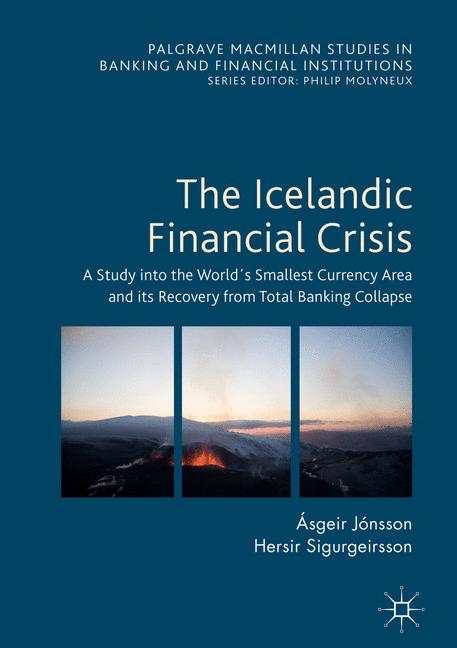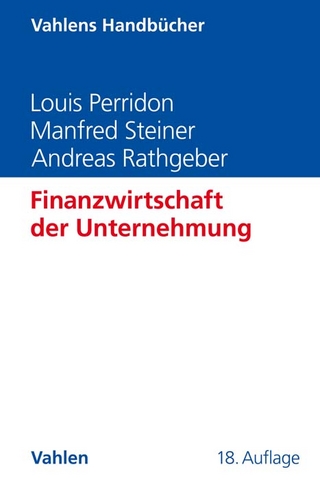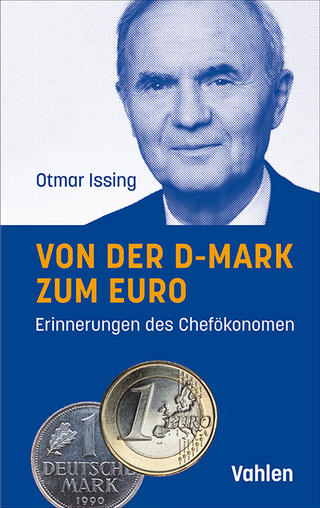
The Icelandic Financial Crisis
Palgrave Macmillan (Verlag)
978-1-349-67919-5 (ISBN)
- Titel wird leider nicht erscheinen
- Artikel merken
Asgeir Jonsson is Associate Professor of Money and Banking and Chair of the Department of Economics at the University of Iceland. In 2004, he became the Chief Economist and Head of Research at Kaupthing Bank, then the largest bank in Iceland. After the banking collapse in 2008, he continued at his post at the Arion Bank, the restored domestic arm of Kaupthing, before accepting his current position at the University of Iceland in 2011. Asgeir is the author of several books and numerous articles on topics ranging from banking and finance, spatial economics, to economic history and literature. He has also written several books about the Icelandic economy, among them a book about the Icelandic banking collapse of 2008 entitled, Why Iceland? (McGraw-Hill Education, 2009). Hersir Sigurgeirsson is Associate Professor of Finance at the School of Business at the University of Iceland. From 2003 to 2006, he was employed in risk management and then proprietary trading at Kaupthing Bank, Iceland, before joining Saga Capital Investment Bank in Akureyri as the Managing Director of Risk Management. Hersir has written extensively on finance as well as undertaking advisory work for organizations such as the World Bank. He received an M.Sc. in Financial Mathematics from Stanford University, US, in 1999 and a Ph.D. in Applied and Computational Mathematics from the same school in 2001.
Chapter 1) Too-big-to-save - the anatomy of a total collapse.- Chapter 2) Big decisions in the small hours - making bank failure a winning strategy.- Chapter 3) From AAA to terrorism - Icesave.- Chapter 4) The standoff with the hedge funds - Is Iceland owned by creditors?.- Chapter 5) What happens when you quadruple the money supply? The hangover of QE policies.- Chapter 6) The Faustian bargain of capital controls.- Chapter 7) Going from 40% cost.- Chapter 8. Lessons from Iceland?.
| Erscheinungsdatum | 19.12.2018 |
|---|---|
| Reihe/Serie | Palgrave Macmillan Studies in Banking and Financial Institutions |
| Zusatzinfo | 23 Illustrations, color; XVI, 349 p. 23 illus. in color. |
| Verlagsort | Basingstoke |
| Sprache | englisch |
| Maße | 148 x 210 mm |
| Themenwelt | Wirtschaft ► Betriebswirtschaft / Management ► Finanzierung |
| Betriebswirtschaft / Management ► Spezielle Betriebswirtschaftslehre ► Bankbetriebslehre | |
| Schlagworte | Banking • Capital Controls • Cost of Financial Crisis • Finance • Icelandic Financial Crisis • Quantitative Easing • Transfer Problem • Vulture Funds |
| ISBN-10 | 1-349-67919-4 / 1349679194 |
| ISBN-13 | 978-1-349-67919-5 / 9781349679195 |
| Zustand | Neuware |
| Informationen gemäß Produktsicherheitsverordnung (GPSR) | |
| Haben Sie eine Frage zum Produkt? |
aus dem Bereich


